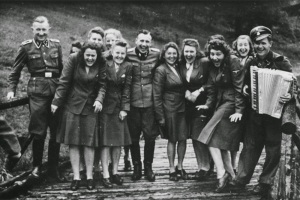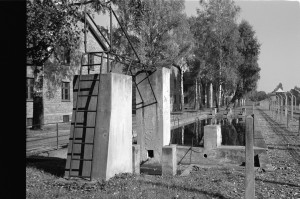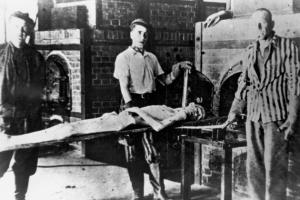In total, there were 7,000 SS personnel: four percent were officers, twenty-six percent were non-commissioned officers, and the remainder were rank-and-file members. Three out of four personnel worked in security at Auschwitz, and the others worked in medical or political departments, camp headquarters, or economic administration, which was responsible for the property of dead prisoners. Women also worked in the SS, two hundred of them working as guards, nurses, or messengers. The camp guards were members of the SS-Totenkopfverbände, which translates to Death’s Head Units. However, the overall command for the entire camp was Department D, Concentration Camps Inspectorate, of the SS-Wirtschafts-Verwaltungshauptamt.

Due to an abundance of slave labor and amenities, SS members lived in comfortable conditions. Officers had household slaves, most of which were Jehovah’s Witnesses because of their nonviolent nature. Facilities for personnel included a library, a swimming pool, a coffee house, and a theater. Some prisoners were lucky enough to get better lodging and food rations than others because they were appointed as a Kapo, “head” or “overseer”. The Kapo was a prisoner chosen in each work detail or prisoner block, usually an Aryan, to watch over the other prisoners. Oftentimes, they abused and beat the inmates because of their superior power.

About 120 SS officers were assigned to the gas chambers, and they lived at the crematoria, but the bulk of the work in the gas chambers was done by Jewish prisoners called Sonderkommando. Their responsibilities included guiding victims to the gas chambers and removing, looting, and cremating corpses. Although their work was horrifying, they were housed separately from the other inmates in somewhat better conditions and were sometimes able to steal goods from murdered prisoners to trade on the Auschwitz black market. Unfortunately, many committed suicide because of the gruesome work, and the rest were shot in weeks, with new units forming afterwards. Almost none of the 2,000 in the units survived to see liberation.
